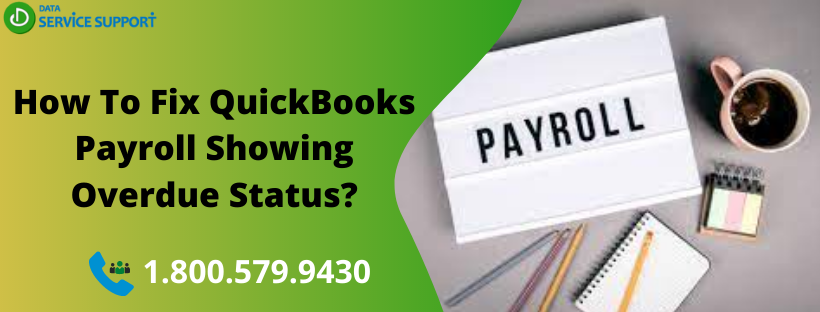You can get QuickBooks payroll showing overdue status while running your payroll when there are no due liabilities. When you go to the Pay Scheduled Liabilities window, it shows the incorrect overdue status for the liabilities that are already paid. There are various possible reasons behind the error, and it is important to highlight them to carry out the relevant troubleshooting procedures. In this post, we will discuss the possible reasons behind the QuickBooks payroll showing the overdue status issue and troubleshoot them using intelligible steps.
Do scheduled liabilities in payroll show as overdue or in reds? Dial our support number 1.800.579.9430 to get help in this perplexing situation while managing your payroll operations
What Are the Possible Reasons Behind The Overdue Payrolls In QuickBooks?
Below is the list of the reasons due to which QuickBooks Payroll can show overdue status for the liabilities that are already paid:
- When the date mentioned on the liability check is after the actual Sent By date
- Several discrepancies in the date or the amount can also evoke the error.
- When you erroneously write the liability checks in the Write Checks window rather than in the Pay Liabilities
- When the liability amounts are based on the calculation of the tax due from the tax form where it should be based on the amount of the tax due in the QuickBooks.’
How To Remove Overdue Payroll In QuickBooks?
The below-given solutions elaborate on how to delete overdue invoices in the QuickBooks application. Follow the steps with full attention:
- Make sure that the date on the liability check is before the Sent Date By If not, correct the date.
- Now find the vendor who received the problematic tax liability checks.
- Next, from the List menu, select the Payroll Item List.
- Locate the tax liability with the incorrect overdue status and note down the vendor that appears in the Payable To It can be a bank or tax agency.
- Run the Vendor Quick Report for the vendor to ensure that the From date is set to 01/01/[current year] and the To date is set to 12/31/[current year], in the Fiscal Year.
- Now in the Type column, look for the Check on or after the date range giving the Overduestatus problem. It will help you to ensure that the liability check was written in the Write Checks
- Correct the checks if they are written in the Write Checks
If the incorrect scheduled liability payment issue persists, try the next troubleshooting procedure:
- Go to the Employee Center and click the Transactions > Liability Checks.
- Now in the Name column, locate the vendor with the problematic check and all the amounts manually for the liability checks listed for the vendor.
Note: Note down the voided liability checks and make sure that they are not included in the total.
- Match this amount to that listed in the payroll summary report for the same date range. On finding discrepancies in the dates, correct them.
- Check the Payroll Liabilities Balances
Read More: A Cautionary Guide to Update QuickBooks Payroll
The steps described in this post can help you in deleting overdue payments on QuickBooks. If you need help from certified QuickBooks experts, give us a call on our support phone number 1.800.579.9430. In no time, you will get relevant help for QuickBooks payroll showing overdue status problem.
